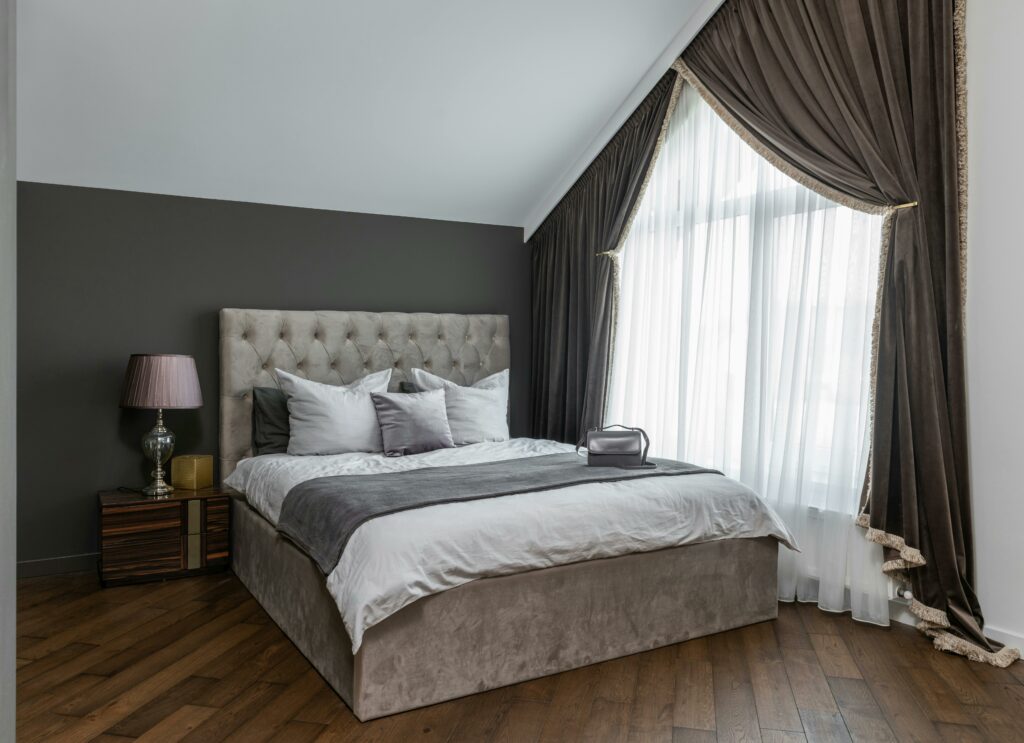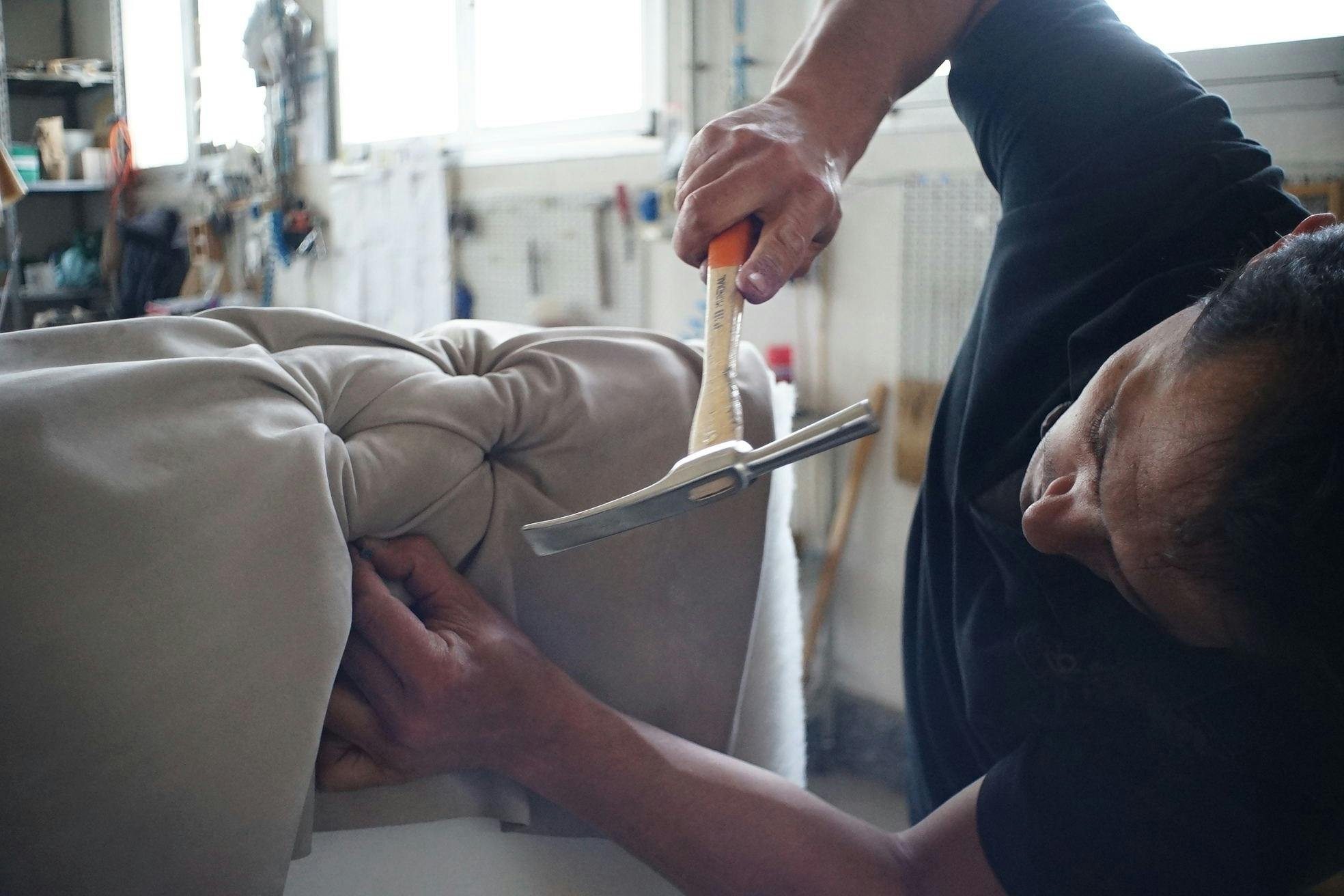Custom Upholstery: Tailoring Furniture to Fit Your Unique Style
In a world where mass-produced furniture dominates, custom upholstery offers a way to stand out. It’s the art of transforming furniture into bespoke creations tailored to your exact specifications. Whether you’re looking to revitalize a cherished piece, match a specific interior theme, or create something entirely new, custom upholstery allows unparalleled control over design, comfort, and quality. This article explores the journey of custom upholstery, from inspiration to execution.
What Is Custom Upholstery?
Custom upholstery involves designing, crafting, or reupholstering furniture to meet individual needs and preferences. Unlike store-bought options, custom pieces reflect your unique taste and lifestyle. The process encompasses:
- Fabric Selection: Choosing from an endless array of materials, colors, and patterns.
- Structural Modifications: Adjusting dimensions or adding features for improved functionality.
- Detailing: Incorporating piping, tufting, trims, or buttons to enhance aesthetics.
- Ergonomic Adjustments: Optimizing cushioning and support for personalized comfort.
The Benefits of Custom Upholstery
Investing in custom upholstery offers a host of advantages:
1. Unmatched Personalization
- Tailor every aspect of your furniture, from fabric type to frame design.
- Create unique combinations of patterns, textures, and finishes.
2. Superior Quality
- Handmade furniture often surpasses factory-made pieces in durability and craftsmanship.
- Custom upholstery services use premium materials for long-lasting results.
3. Eco-Friendly Choices
- Repurpose existing furniture instead of discarding it.
- Opt for sustainable fabrics, fillings, and finishes to reduce your environmental impact.
4. Perfect Fit for Any Space
- Adjust furniture dimensions to suit small apartments, open layouts, or oddly shaped rooms.
- Seamlessly match your furniture to your home’s architectural style.
How to Begin the Custom Upholstery Process
Starting a custom upholstery project requires careful planning and collaboration with skilled artisans. Follow these steps to ensure success:
1. Define Your Vision
- Gather Inspiration: Use platforms like Pinterest or design magazines to collect ideas.
- Consider Functionality: Identify how the furniture will be used and who will use it.
2. Choose the Right Professional
- Look for upholsterers with strong portfolios and positive reviews.
- Discuss your ideas, budget, and timeline to ensure compatibility.
3. Select Materials and Features
- Fabric: Choose between natural fibers (cotton, linen) and synthetics (polyester, microfiber).
- Padding: Opt for foam, feather, or hybrid fillings for desired comfort levels.
- Frame: Decide whether to retain the existing frame or build a new one.
- Details: Incorporate design elements like contrasting piping, tufting, or nailhead trim.
4. Review and Approve Designs
- Ask for fabric swatches, sketches, or digital renderings before finalizing.
- Ensure measurements and structural modifications align with your expectations.
Custom Upholstery Fabric Choices
The fabric is the most visible element of upholstered furniture, so choosing the right one is critical. Factors to consider include:
1. Durability
- Heavy-Duty Fabrics: Leather, canvas, or tightly woven synthetics for high-traffic areas.
- Delicate Options: Silk or velvet for accent pieces and low-use settings.
2. Aesthetics
- Patterns like florals or geometrics can make a statement, while solids offer versatility.
- Textures such as chenille or boucle add depth to the design.
3. Maintenance
- Stain-resistant fabrics are ideal for families with kids or pets.
- Removable or washable covers simplify cleaning.
Popular Custom Upholstery Styles
Custom upholstery caters to every design preference, from classic to contemporary. Here are some popular styles to inspire your project:
1. Mid-Century Modern
- Features clean lines, tapered legs, and simple silhouettes.
- Often uses leather or textured fabrics in muted tones.
2. Vintage Revival
- Restores antique furniture with modern twists.
- Combines traditional patterns like damask with contemporary color palettes.
3. Eclectic Mix
- Merges various styles, fabrics, and patterns for a bold, one-of-a-kind look.
- Perfect for showcasing your personality.
4. Minimalist Design
- Prioritizes simplicity with neutral colors and sleek, understated shapes.
- Highlights quality craftsmanship and natural materials.
Cost Considerations for Custom Upholstery
Custom upholstery often comes with a higher price tag than store-bought furniture, but it’s an investment in quality and individuality. Key factors influencing cost include:
- Fabric Selection: Premium materials like leather or designer fabrics increase expenses.
- Structural Changes: Adding features or resizing furniture can require additional labor.
- Complexity of Design: Intricate details like tufting or embroidery add to the cost.
Maintenance Tips for Custom Upholstered Furniture
Protect your investment by following these maintenance tips:
- Vacuum Regularly: Removes dust and debris from fabric surfaces.
- Rotate Cushions: Prevents uneven wear and maintains shape.
- Spot Clean Promptly: Treat spills immediately to avoid stains.
- Use Protective Treatments: Apply fabric guards or UV-resistant sprays for extra durability.
Incorporating Custom Upholstery into Interior Design
Custom furniture can transform your living space when integrated thoughtfully:
- Statement Pieces: Use bold patterns or vibrant colors for eye-catching sofas or chairs.
- Matching Sets: Create harmony by upholstering multiple pieces in complementary fabrics.
- Accent Highlights: Upholster ottomans, headboards, or throw pillows to tie the room together.
The Future of Custom Upholstery
As technology and sustainability shape the furniture industry, custom upholstery evolves in exciting ways:
- 3D Printing: Enables precise frame construction and rapid prototyping.
- Eco-Friendly Innovations: Introduces biodegradable foams and recycled textiles.
- Digital Visualization: Uses augmented reality to preview designs in your space.
- Smart Fabrics: Incorporates temperature-regulating or stain-resistant technologies.
Conclusion: Designing the Furniture of Your Dreams
Custom upholstery is a powerful tool for creating furniture that reflects your style, supports your comfort, and fits seamlessly into your home. Whether restoring a treasured piece or building something entirely new, the possibilities are endless. By collaborating with skilled professionals and embracing your creativity, you can transform any furniture into a masterpiece uniquely yours.



